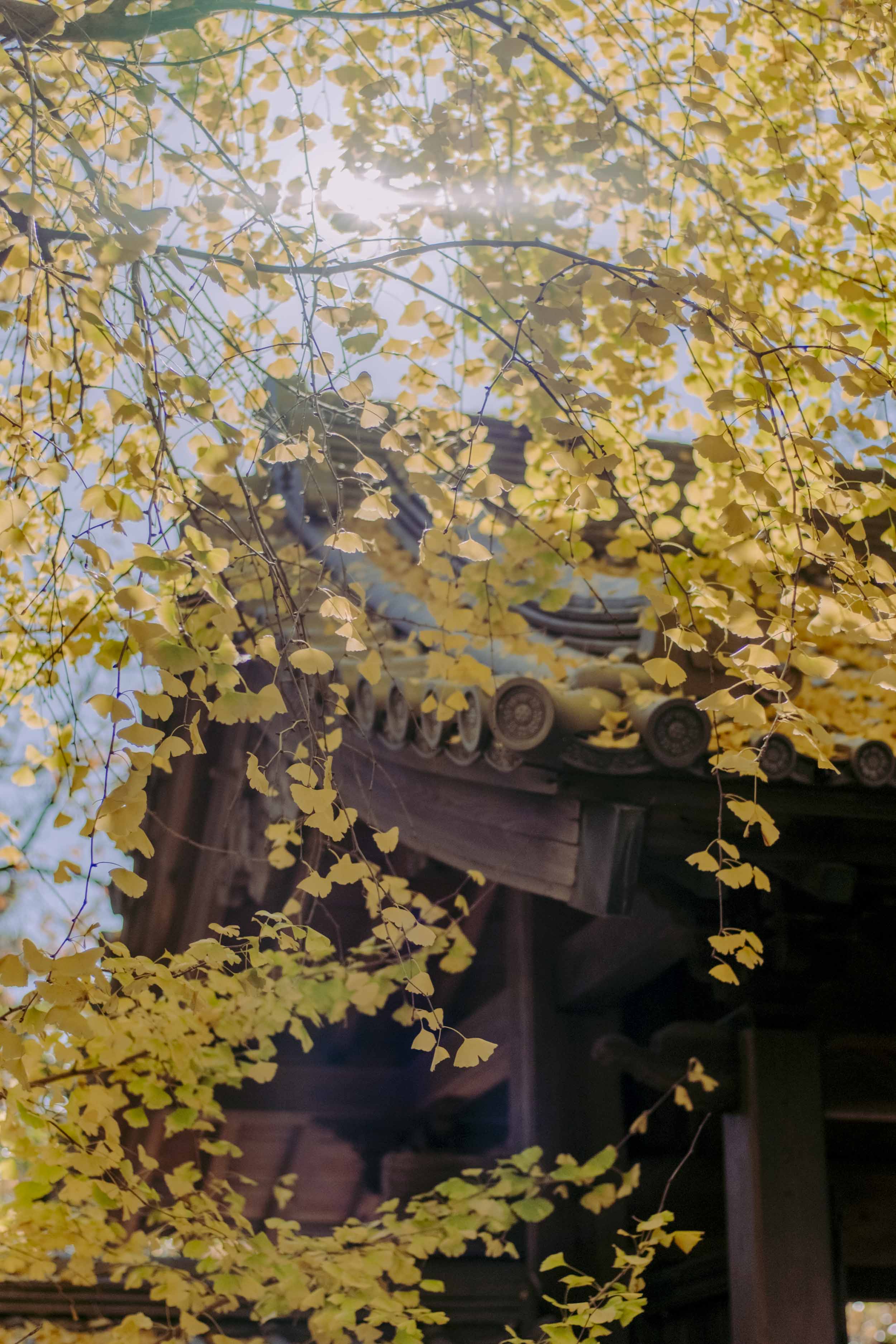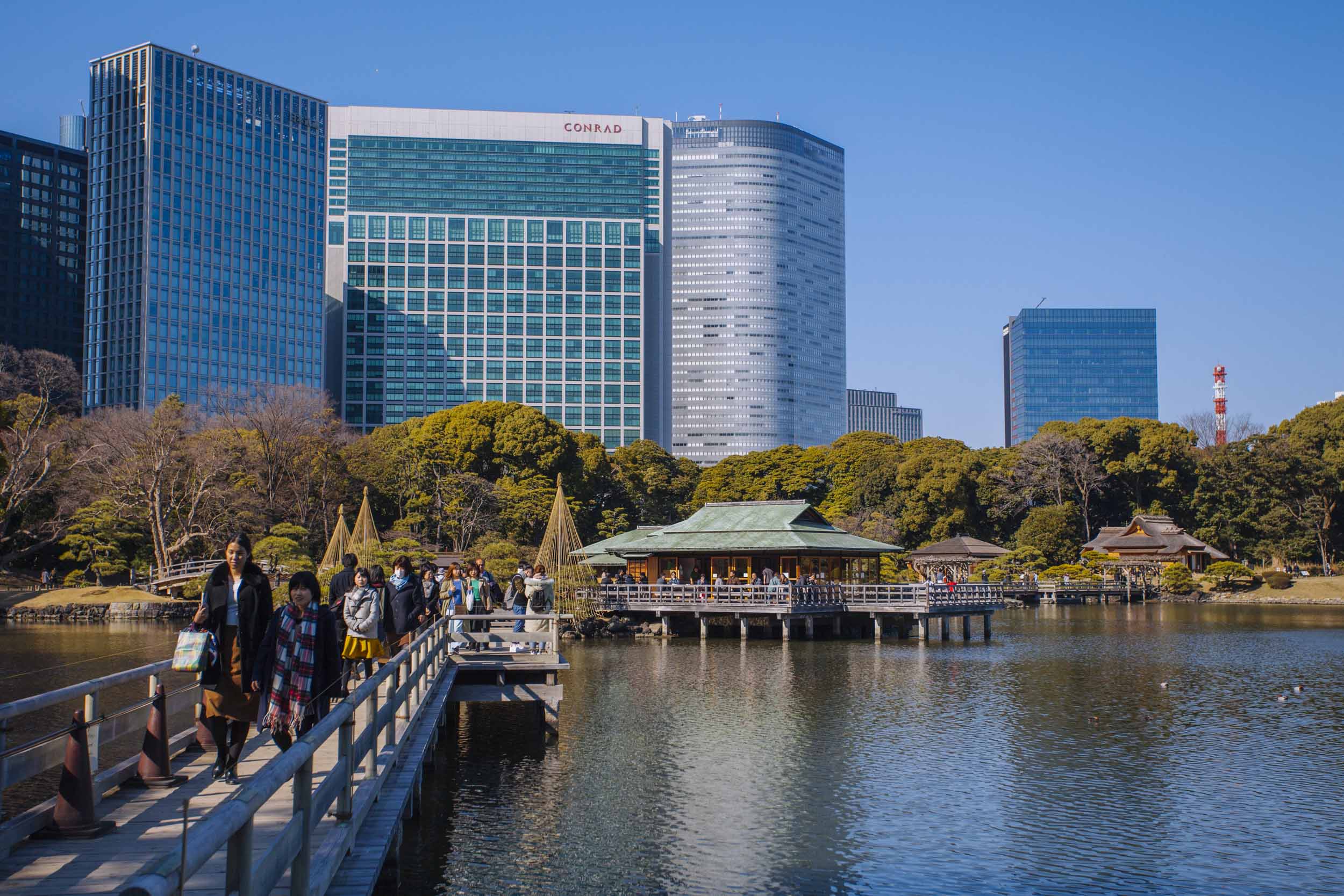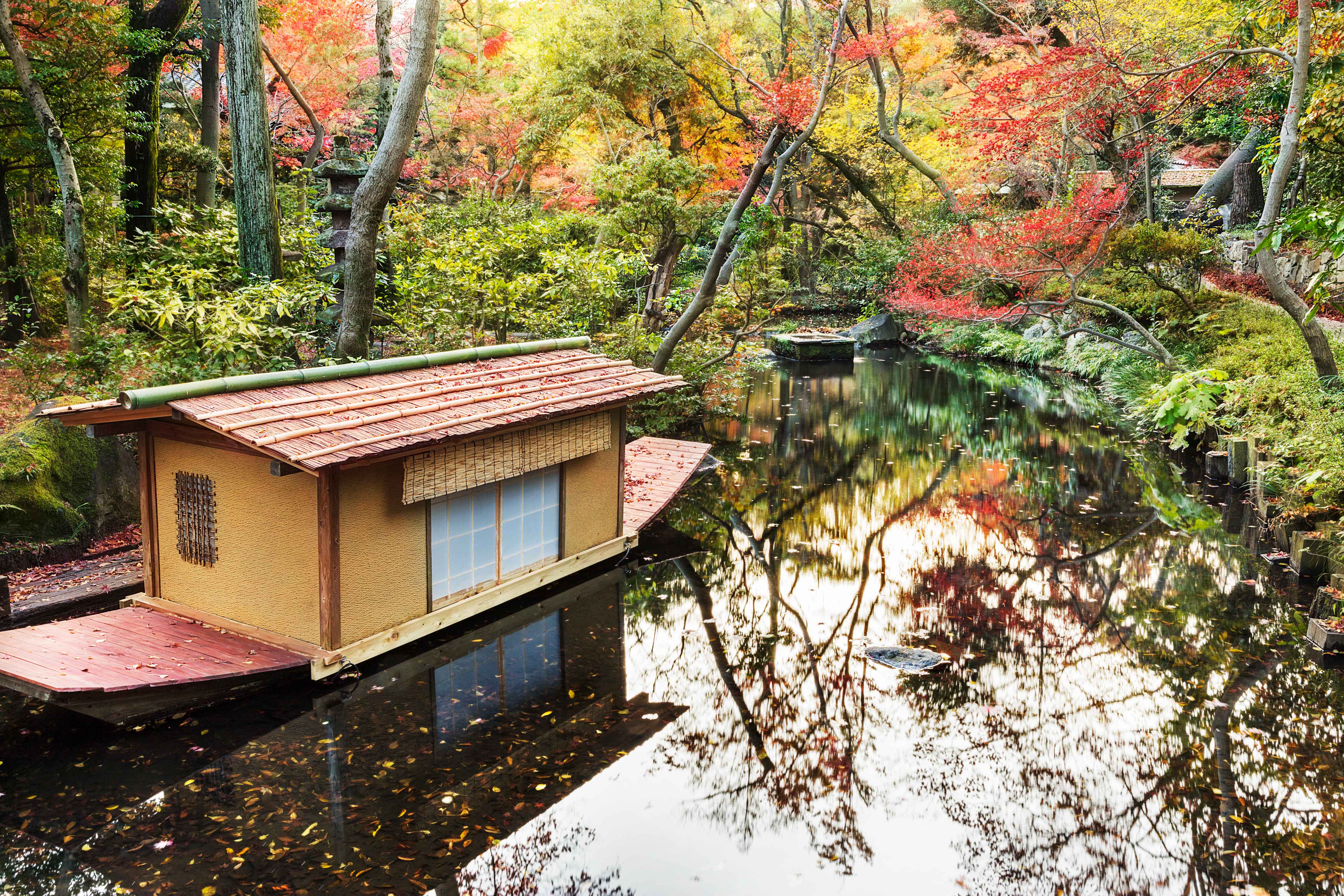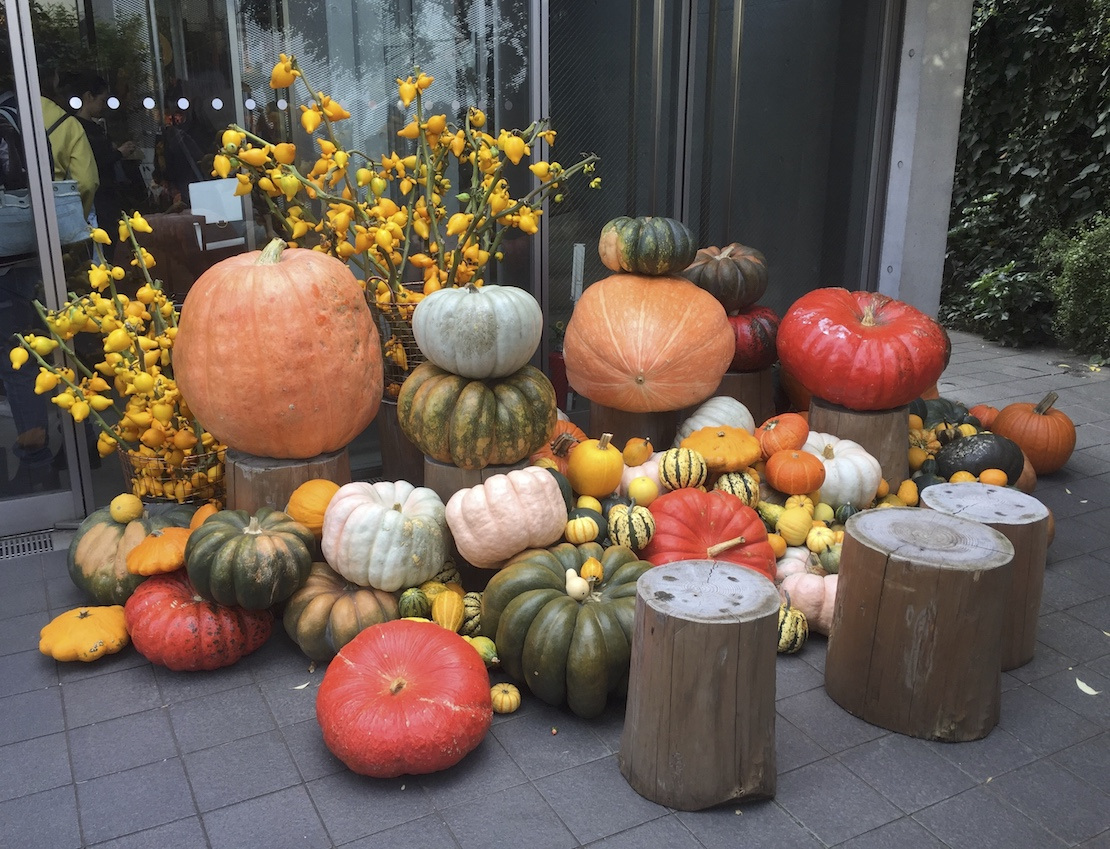Tokyo's Best Places to see Momiji (Autumn Colors)
Season: mid November - mid December
As the yearly calendar’s second most famous season for visiting gardens, momiji or kōyō - the leaves changing color - has got to be one of our favorite times of the year.
Whether its getting lost in the stunning nighttime viewings of Rikugien Garden, visiting one of Tokyo’s most beautiful wooden houses or admiring the stunning fall colors from the warmth of a hot spring - we really don’t need any excuses to get out of the house this season...
Whether its getting lost in the stunning nighttime viewings of Rikugien Garden, visiting one of Tokyo’s most beautiful wooden houses or admiring the stunning fall colors from the warmth of a hot spring - we really don’t need any excuses to get out of the house this season...
︎
Kyu Asakura House | Daikanyama




Built in 1919 as a private residence of assembly chairman Torajiro Asakura, Kyu Asakura House is now considered an important cultural property by the Japanese government - and we know exactly why. It is one of the only remaining traditional Japanese wooden houses in Tokyo, having survived the bombings of World War II and gives us a glimpse into the lives of the old Japanese elite.
A small but beautifully composed Japanese garden lies adjacent to one side of the building and can be seen from within the traditional tatami rooms on the inside or explored during a short walk on the outside.
Best Time to Visit: late autumn (December) when the red maple is in full color and blankets the garden in a stunning warm hue. Visit an hour before closing to catch the amazing golden hour sunset
A small but beautifully composed Japanese garden lies adjacent to one side of the building and can be seen from within the traditional tatami rooms on the inside or explored during a short walk on the outside.
Best Time to Visit: late autumn (December) when the red maple is in full color and blankets the garden in a stunning warm hue. Visit an hour before closing to catch the amazing golden hour sunset
︎
︎March-October: 10:00 - 18:00, November-February: 10:00-16:30, Closed on Mondays
︎29-20, Sarugakucho, Shibuya-ku, Tokyo
︎Google Maps
︎Website(Japanese only)
Adults: ¥100
Primary School Children: ¥50
Over 60: Free
︎29-20, Sarugakucho, Shibuya-ku, Tokyo
︎Google Maps
︎Website(Japanese only)
Adults: ¥100
Primary School Children: ¥50
Over 60: Free
Rikugi-en Garden | Komagome




Rikugi-en, located in Tokyo’s northern Komagome district, is a pristine and exceptionally beautiful garden dating back to the Edo Period. In 1953 it was designated by the Japanese government as a site of exceptional beauty and an important cultural asset and is one of Tokyo’s must-go-to gardens. The tea house located inside Rikugi-en is well worth a visit as it features a direct view of the garden’s main pont which is especially beautiful during Japan’s famous spring and autumn seasons. Be sure to visit also during the autumn light-up events when you can enjoy your tea and a unique nightime view until 21:00, but expect crowds.
Best Time to Visit: late November- early December when the red maple is in full color. Visit at night to catch the autumn nighttime illuminations (extra ticket required)
Best Time to Visit: late November- early December when the red maple is in full color. Visit at night to catch the autumn nighttime illuminations (extra ticket required)
︎
︎9:00 to 17:00 (Last entrance 16:30), Closed: Year-end holidays (December 29 to January 1) - extended opening hours until 20:30 during spring and autumn evening light-ups
︎6-16-3 Hon-komagome, Bunkyo-ku, Tokyo
︎Google Maps
︎Website
Garden entrance fee: ¥300 (65 and over: ¥150)
(No charge for primary school children or younger, and junior high school students living or attending school in Tokyo)
Autumn Nighttime Illuminations: Late November - Early December depending on season | 09:00-20:30 (Illumnation starts after sunset)
︎6-16-3 Hon-komagome, Bunkyo-ku, Tokyo
︎Google Maps
︎Website
Garden entrance fee: ¥300 (65 and over: ¥150)
(No charge for primary school children or younger, and junior high school students living or attending school in Tokyo)
Autumn Nighttime Illuminations: Late November - Early December depending on season | 09:00-20:30 (Illumnation starts after sunset)
Todorki Valley | Todoroki




About half-an-hour train ride away from central Tokyo, Todoroki Valley is a beautiful getaway from the city, and a place where you can truly forget about the stresses and hustle of everyday life . From Todoroki Station, find the entrance to Todoroki Valley next to Seijo Ishii supermarket and descend down into this Studio Ghibli-esque wonder of nature and walk along the small river which carves through Tokyo like a small urban jungle. The pathway will lead you past several small shrines and across a picturesque bridge until you reach Setsugekka, a lovely tea house which offers green tea, amazake and a variety of Japanese sweets.
If you make your way up the stairs you will find a wooden plateau which is a wonderful place to see the cherry blossoms in spring or the yellow ginkgo leaves in autumn.
Best Time to Visit: mid November - early December
If you make your way up the stairs you will find a wooden plateau which is a wonderful place to see the cherry blossoms in spring or the yellow ginkgo leaves in autumn.
Best Time to Visit: mid November - early December
︎
Hamarikyu Garden and Tea House | Shiodome



Located adjacent to Tokyo Bay and surrounded by the glitzy business towers of Shiodome and Tsukiji, Hamarikyu Garden is an oasis lost in time amidst the fast-paced modern world of Tokyo. Once the property of the Tokugawa family and then the Imperial family, Hama-rikyu was almost completely destroyed in the Great Kanto Earthquake and in the bombings of World War II. After the Imperial Family restored and relinquished the garden to the city of Tokyo, Hama-rikyu was turned opened to the public in 1946 and is now considered one of the most beautiful Edo-style gardens in Tokyo.
In October the garden becomes host to the Tokyo Grand Tea Ceremony which is an amazing opportunity to witness a slice of Japanese tradition guided by a tea ceremony master.
Insider’s Tip: Be sure to end your tour of this historic garden with a visit to the tranquil tea house (Nakajima no ochaya) which is situated on a small island surrounded by the garden’s pont.
In October the garden becomes host to the Tokyo Grand Tea Ceremony which is an amazing opportunity to witness a slice of Japanese tradition guided by a tea ceremony master.
Insider’s Tip: Be sure to end your tour of this historic garden with a visit to the tranquil tea house (Nakajima no ochaya) which is situated on a small island surrounded by the garden’s pont.
︎
︎9:00 to 17:00 (Entry until 16:30), Tea House: 9:00 to 16:4, Closed: Year-end holidays (December 29 to January 1)
︎1-1, Hama Rikyu-teien, Chuo-ku, Tokyo 104-0046
︎Google Maps
︎Website
Garden entrance fee: ¥300 (65 and over: ¥150, primary school children or younger: free)
︎1-1, Hama Rikyu-teien, Chuo-ku, Tokyo 104-0046
︎Google Maps
︎Website
Garden entrance fee: ¥300 (65 and over: ¥150, primary school children or younger: free)
Nezu Museum Garden | Aoyama



Nestled in the middle of Aoyama, a stone’s throw away from the glitz and glamour of fashionable Tokyo, Nezu Museum’s garden is a refreshing oasis and a must-see for any visitor to Nezu Museum. Follow the path along the small ponds, past the tea house and stone lanterns, and let yourself get lost in the midst of chirping cicadas and the undulating movements of ever-graceful koi. During autumn season, this garden is also a wonderful place to catch Japan’s famous fall colors.
Note: to enter the garden you need to purchase a ticket to the museum’s exhibition.
Note: to enter the garden you need to purchase a ticket to the museum’s exhibition.
︎
︎10:00 - 17:00, Closed on Mondays and during exhibition installation periods
︎6-5-1 Minamiaoyama, Minato-ku, Tokyo
︎Google Maps
︎Website
Ticket to museum required for entry.
Photos courtesy of Nezu Museum
︎6-5-1 Minamiaoyama, Minato-ku, Tokyo
︎Google Maps
︎Website
Ticket to museum required for entry.
Photos courtesy of Nezu Museum
NOMU Flower Café | Aoyama



In the backstreets of Aoyama, nestled between the chic and fashionable buildings and shops that this area is known for, lies florist Nicolai Bergmann’s Tokyo flagship store along with Nomu, a must stop for any design and café lover. The lines forming outside this establishment tell the story of Nicolai Bergmann’s success in the Japanese capital, which he took by storm with his avante-garde flower arrangements and signature “flower boxes”. Nomu café is also our favorite flower café in Tokyo, easily surpassing its competitors with its delicious menu featuring fresh fruit smoothies, a selection of delicious cakes (try the banana cake) and minimal design.
In autumn the store transforms into an explosion of orange, yellow and red, so be sure to stop by on your exploration of Aoyama and get some delicious autumn refreshments.
In autumn the store transforms into an explosion of orange, yellow and red, so be sure to stop by on your exploration of Aoyama and get some delicious autumn refreshments.
︎
Hotel Chinzanso Garden | Waseda



Although part of the famous Chinzanso Hotel, this garden can be visited freely all year around and should be on the list of any Japanese garden lover. Stroll along the Kanda river until you reach the beautiful Kabuki-mon gate in the South of the garden which will lead you slightly up the hill past various ponds, a three-story pagoda, a small bridge and a waterfall. Especially beautiful at night when the trees are illuminated, you might also stumble upon the occasional kimono-wearer as this is a popular spot for weddings and traditional celebrations.
Tip: After your stroll through the garden head straight for the beautiful, small restaurant in the garden that serves reasonably priced Japanese unagi (eel) dishes for lunch.
Tip: After your stroll through the garden head straight for the beautiful, small restaurant in the garden that serves reasonably priced Japanese unagi (eel) dishes for lunch.
︎
︎09:00 - 21:00
︎2-10-8 Sekiguchi, Bunkyō-ku, Tokyo
︎Google Maps
︎Website
Closest Station:
Edogawabashi Station (Yurakucho Line)
Waseda Station (Toden Arakawa Line, not Tokyo Metro)
Free entry.
︎2-10-8 Sekiguchi, Bunkyō-ku, Tokyo
︎Google Maps
︎Website
Closest Station:
Edogawabashi Station (Yurakucho Line)
Waseda Station (Toden Arakawa Line, not Tokyo Metro)
Free entry.
More topics
